Trail Cam: Grey Fox – Winter 2018
We decided to employ one of our trail cameras in the hunt for an answer. Here’s are some of the photos that were captured.
One of two trail cams that we have set up on the property.
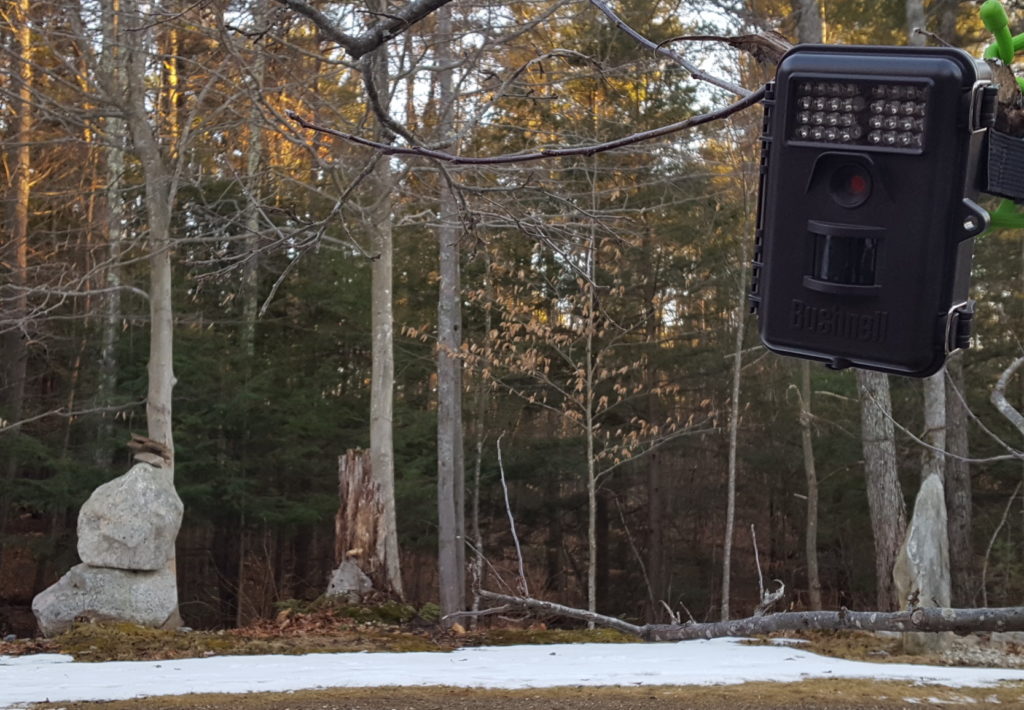
The dark strip of fur running down the tail in this picture bolstered our thinking that we had a gray fox roaming around the yard.
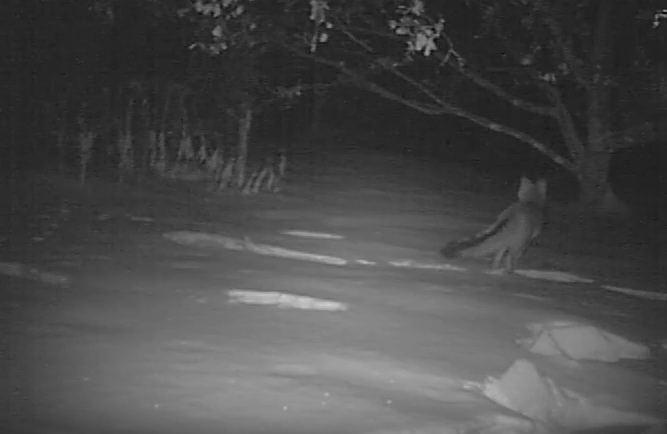
Much like the first photo, this one not only shows the dark strip of fur running down the tail, but also reveals the motivation for this fox to spend so much time in the yard: a meal of old apples!
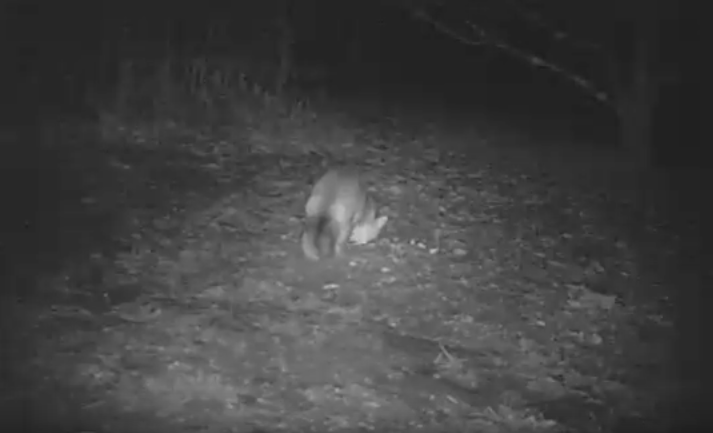
The dark bars or steaks on the muzzle of this fox are another great indicator of this being a gray fox.
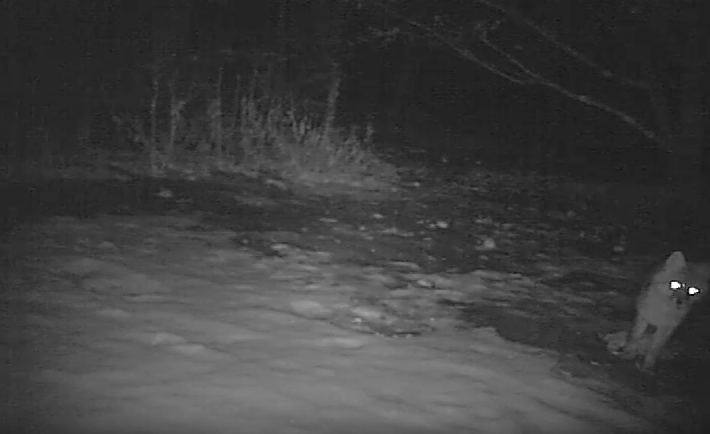
Photo Journal: Central Atlantic Seacoast – James McNaughton
“This Fall, I had the good fortune to carve out a large chunk of time to leave home and journey south on a much needed sojourn. I recently purchased a baby Airstream camper called by the manufacturer, the Bambi Sport. It is 16 feet long, which is shorter than my solo canoe! I have taken to calling it ‘The Escape Pod.’
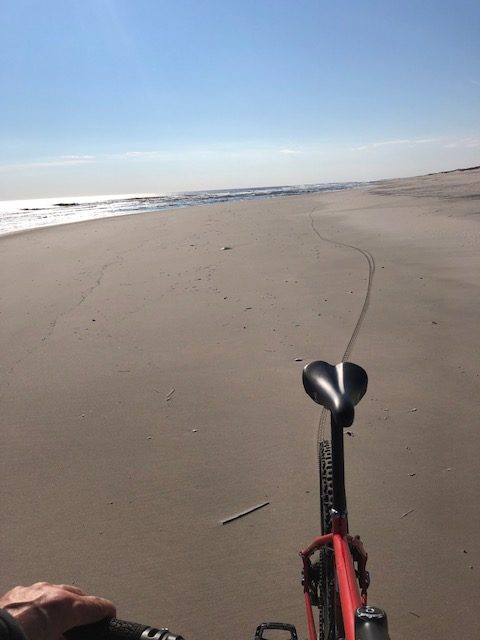
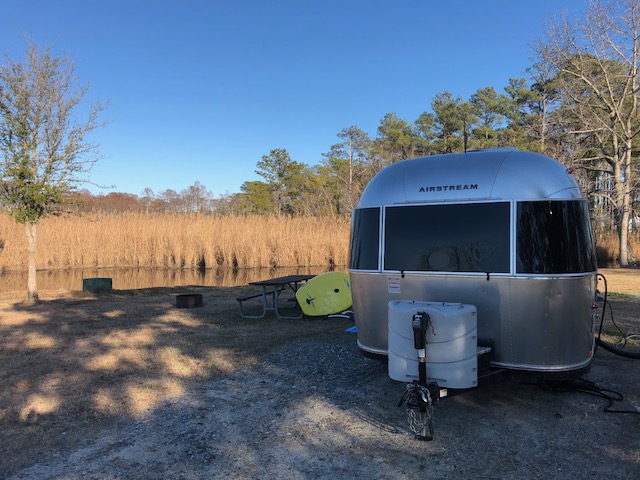
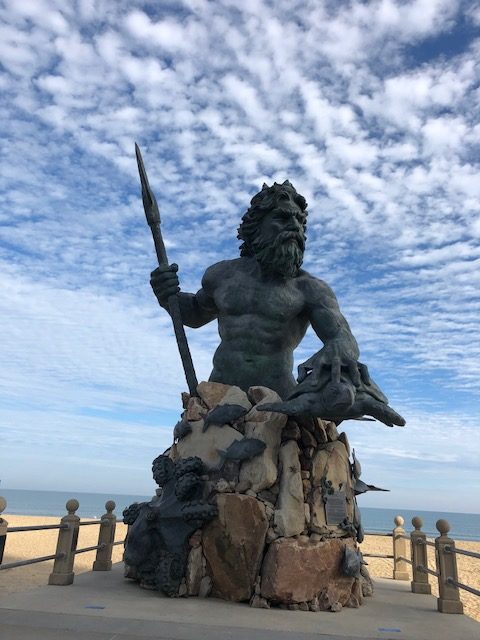
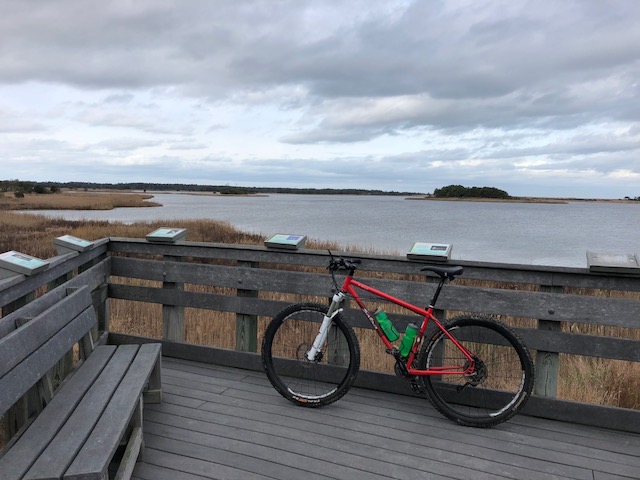
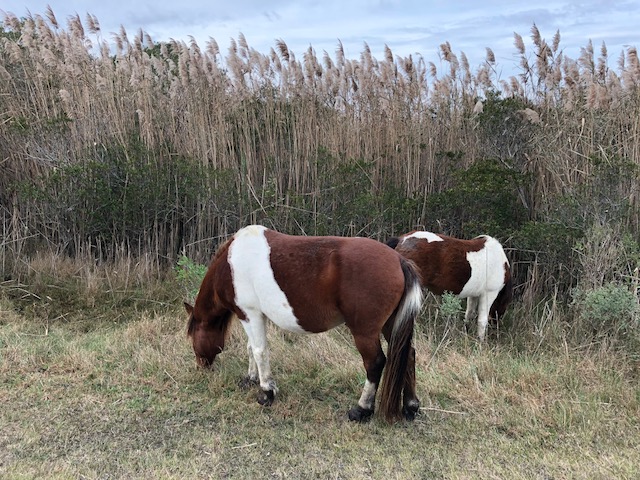
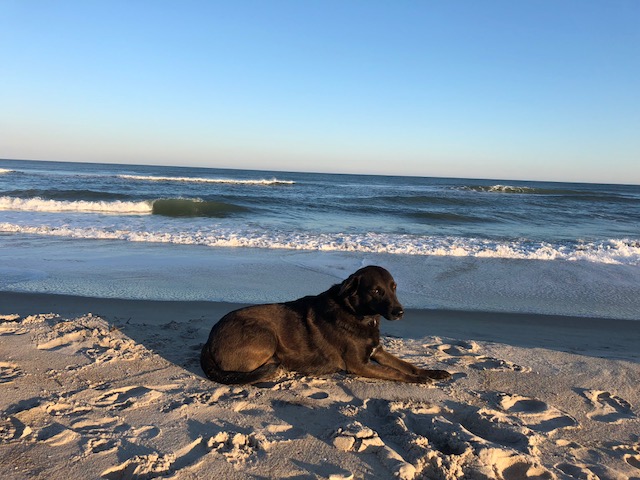
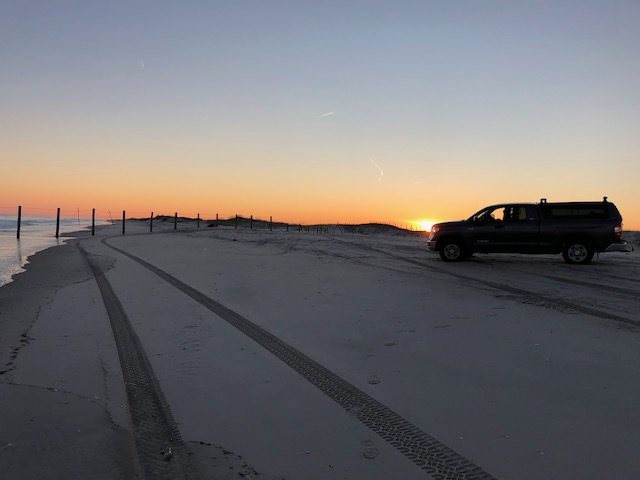
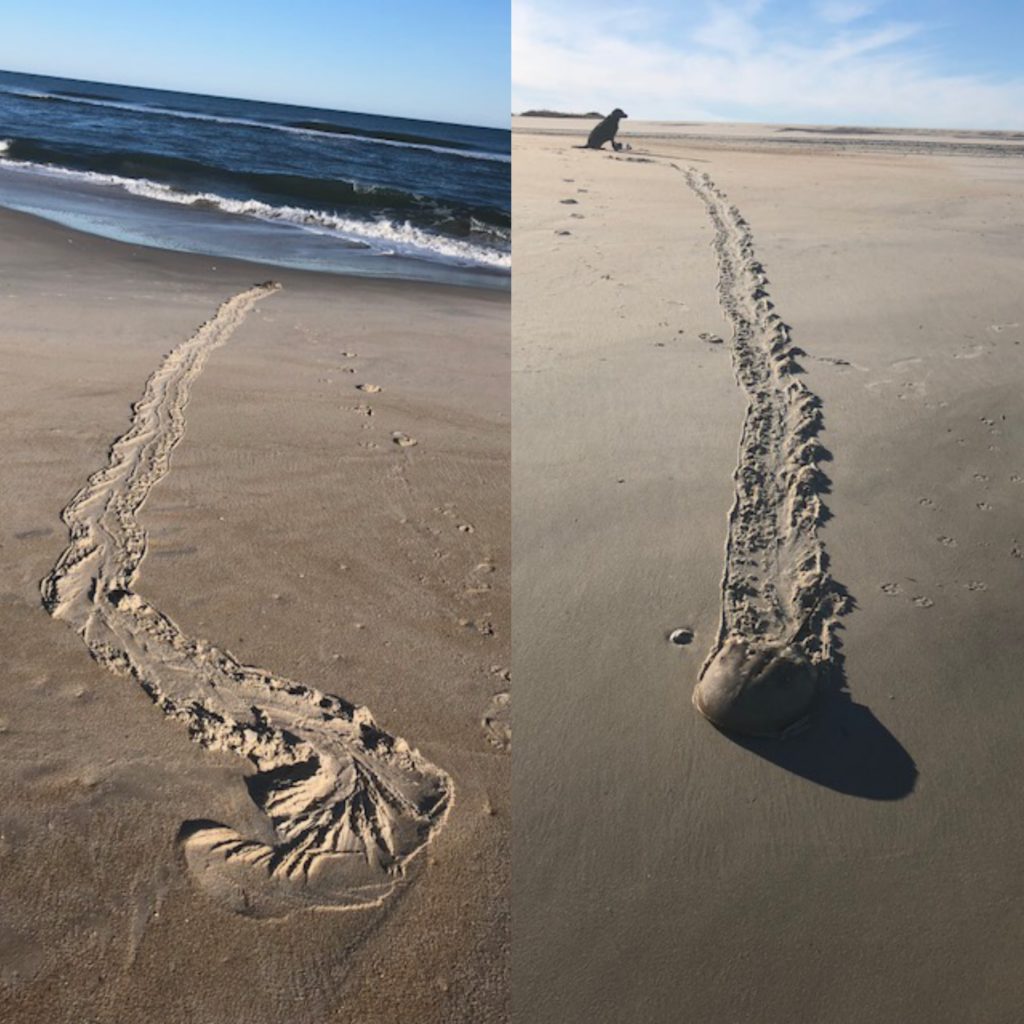
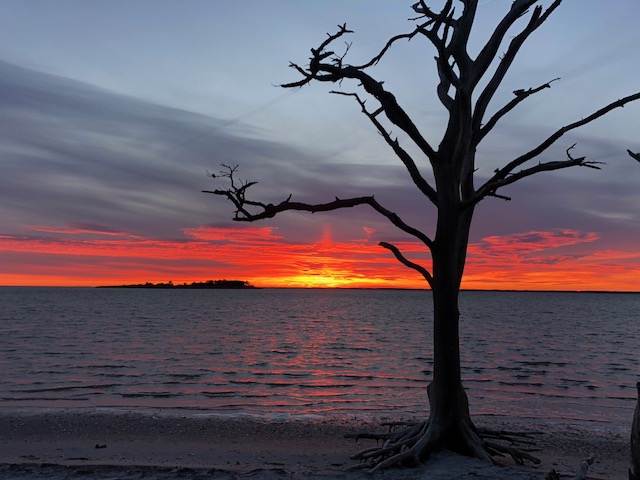
Photo Journal: The River of Grass in Florida’s Everglades – Farlin Black
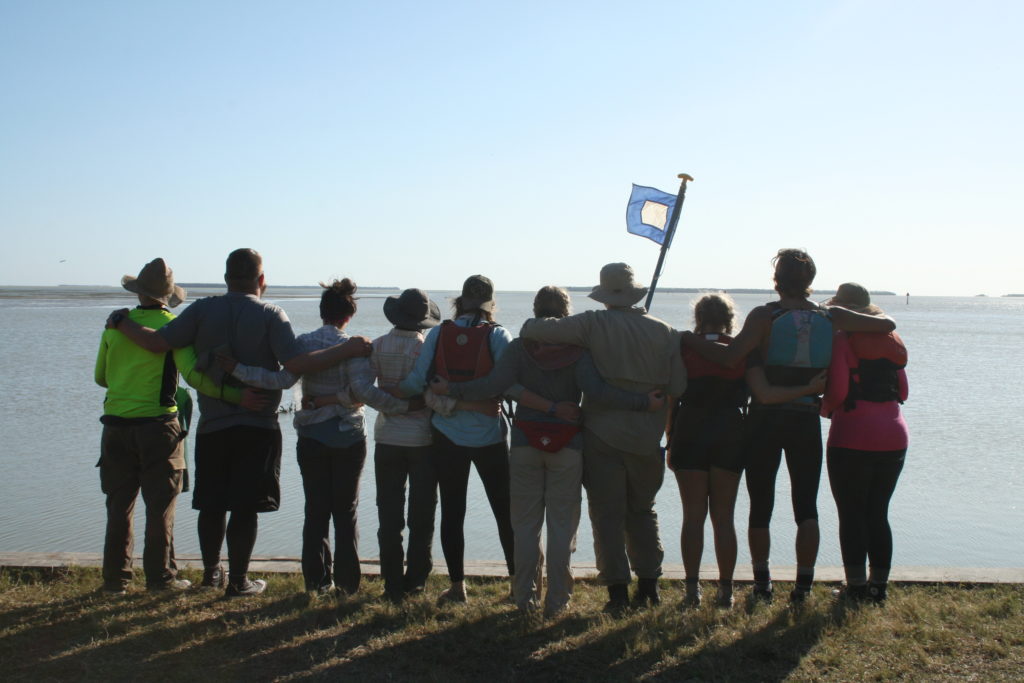
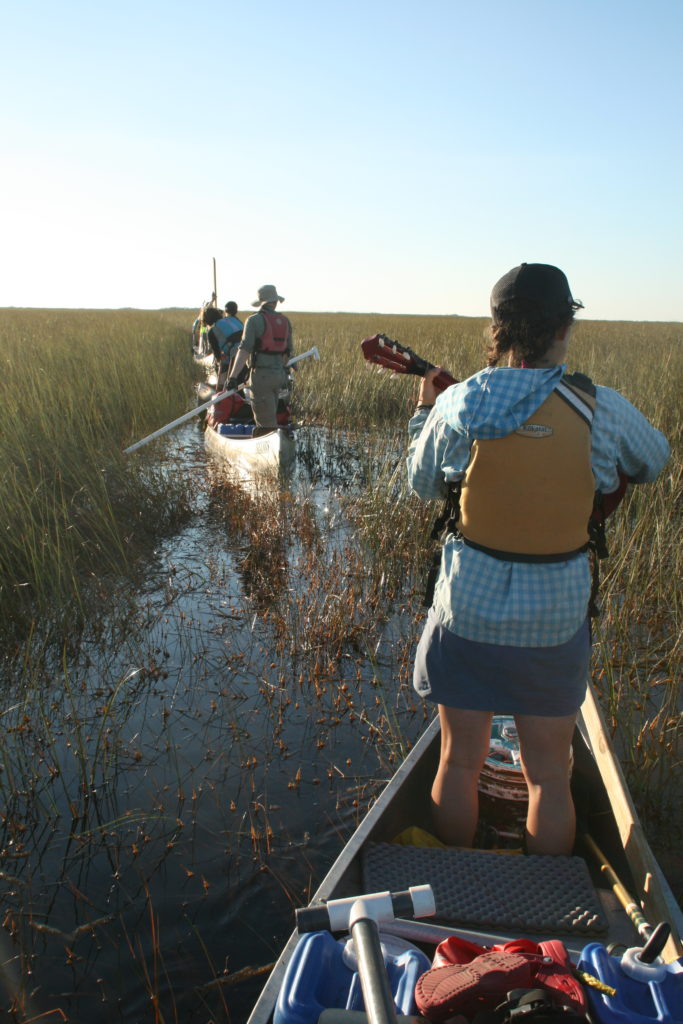
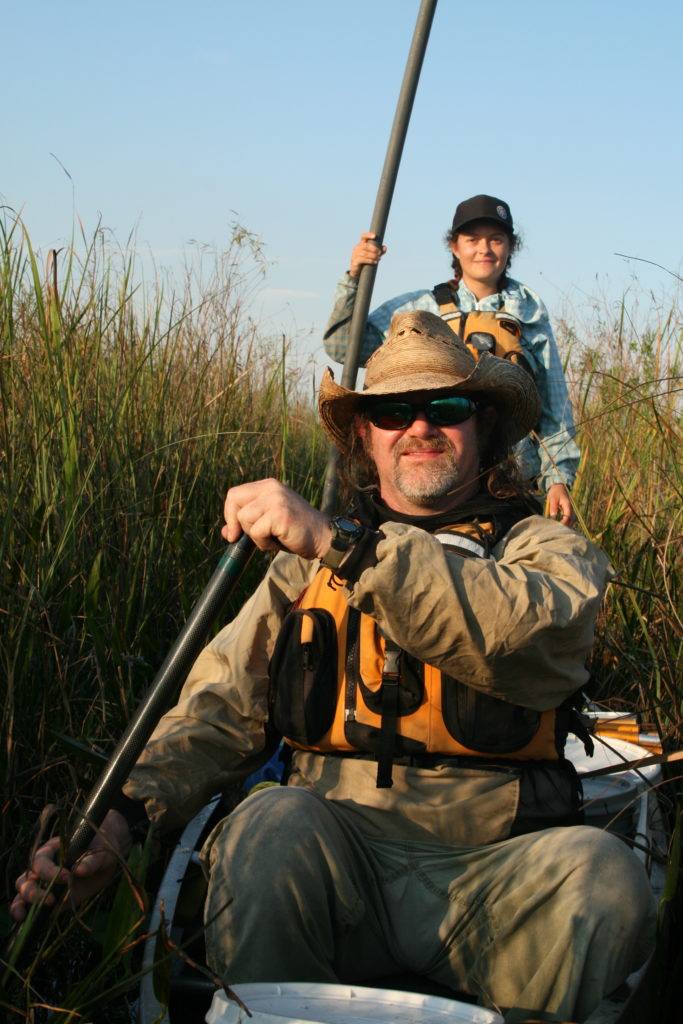
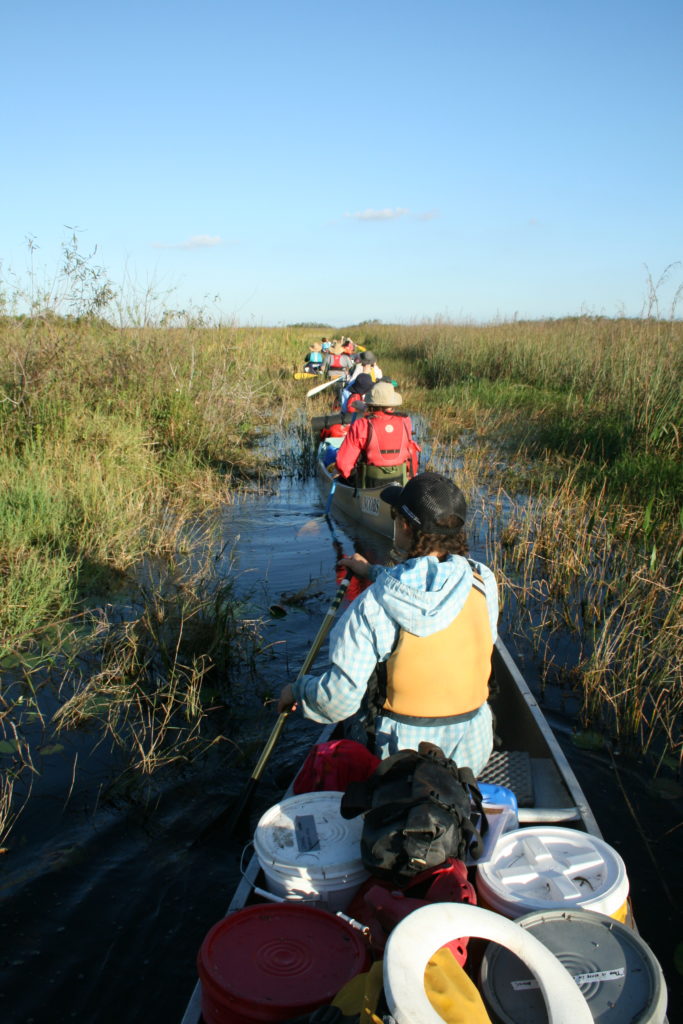
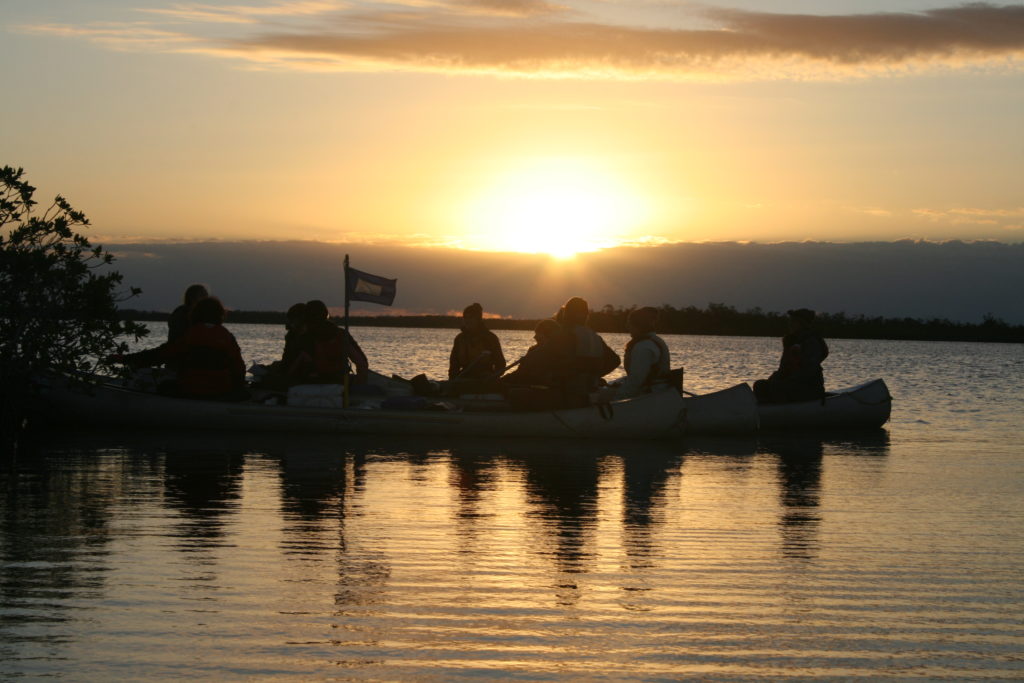
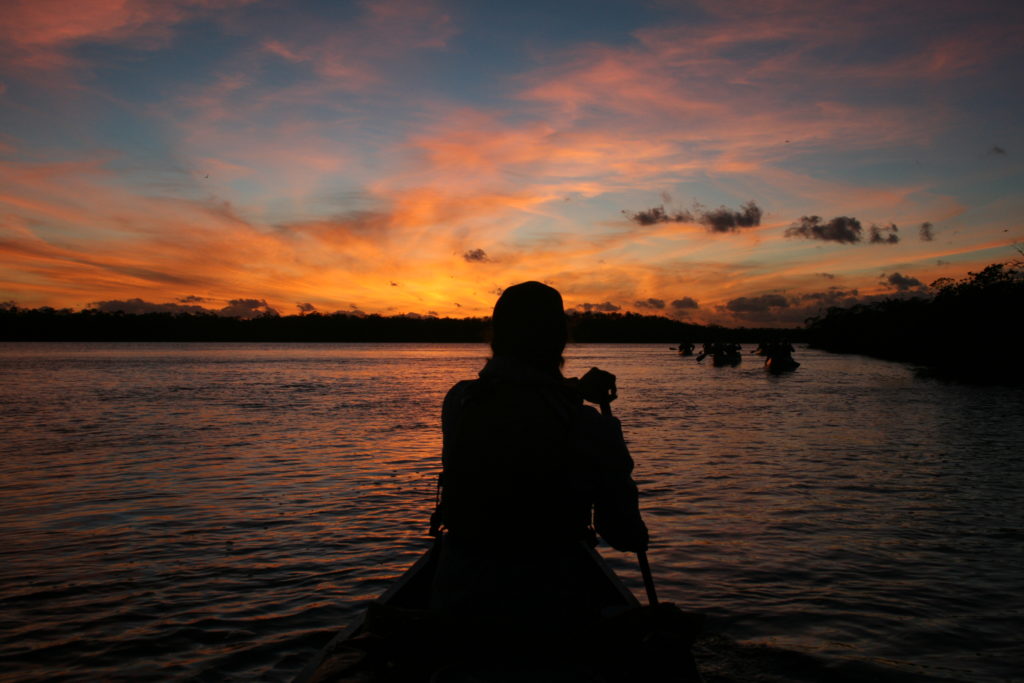
Forest Forensics
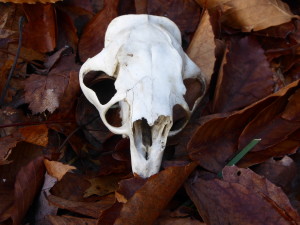 While tracking out behind my house, I settled in for a quick lunch half way up a gully overlooking a brook that was moving swiftly from the melting snow. As I stood up to seek a way through the thick laurel, I spotted clumps of hair poking through the leaf litter. Pulling back the leaves, I discovered a voluminous pile of hair and quills of a porcupine. As I probed the site, I discovered the skull a few feet away.
While tracking out behind my house, I settled in for a quick lunch half way up a gully overlooking a brook that was moving swiftly from the melting snow. As I stood up to seek a way through the thick laurel, I spotted clumps of hair poking through the leaf litter. Pulling back the leaves, I discovered a voluminous pile of hair and quills of a porcupine. As I probed the site, I discovered the skull a few feet away.
In examining it, I noticed the bones on the upper ridge of the nasal cavity had been broken. My forensic conclusion is that a fisher likely predated upon it. Fishers will attempt to corner porcupines and then lash out at their quill free faces. When the animal weakens from blood loss, they will sometimes then go for the throat. Eventually, the fisher will feed on the porcupine through the belly, which is also free of quills.
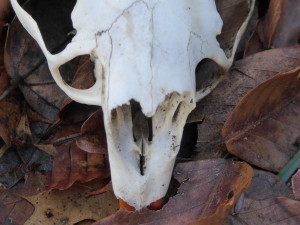
How a river can move you
We all know that unstructured play is of the utmost importance for kids. Especially in these modern times where kids days are highly activity structured, they have benchmarks to meet in relation to academic standards, and technology has an amazing capacity to mesmerize their attention.
Here is a video that speaks to the limitless expression of outdoor play and nature connection, and which makes us here at the office reflect on how we choose to engage or not engage in our surroundings and how we all, large and small, can enjoy and benefit from play……
When was the last time you spent a day by a river?
“Seven Sisters” – Beautiful Mountains – Beautiful Song
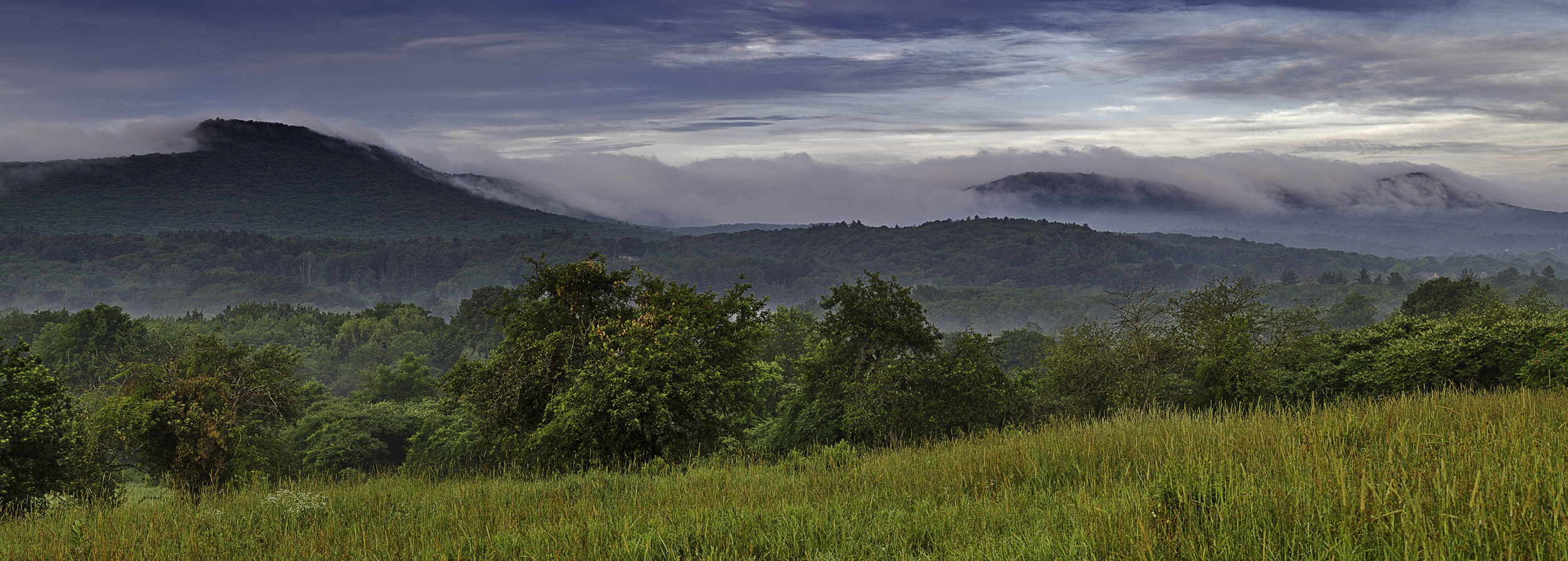
For those of us that live in the Pioneer Valley, the Seven Sisters Range is a common sight from many vantages. This lovely range is an anomaly in that it runs roughly east west and was created as molten rock erupted through fissures in the bedrock. I have hiked these hills many, many times and never tire of the views that can be beholden from the many vistas along its 9 plus miles. Another delight here in the valley is the depth of talent in the musical realm, as well as dozens of venues in which to experience it. Brooks Williams lived here in the valley and recorded many recordings on the valley label Signature Sounds. Please check out his lovely song – “Seven Sisters” here.
Dinosaurs in our Midst
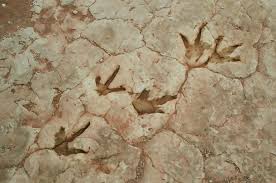 Every once in a while I have a vision – I am suddenly transported to a place in my mind where I can picture the banks of the Connecticut River swarming with large, bipedal dinosaurs. Did you know that the “first dinosaur tracks in recorded history” were found here in the Connecticut River Valley? (Or at least the first European person to take special note of them…)
Every once in a while I have a vision – I am suddenly transported to a place in my mind where I can picture the banks of the Connecticut River swarming with large, bipedal dinosaurs. Did you know that the “first dinosaur tracks in recorded history” were found here in the Connecticut River Valley? (Or at least the first European person to take special note of them…)
The story goes that in 1802, a farm boy by the name of Pliny Moody plowed up a slab of rock with tracks in it which he described as being “three-toed like a bird”. He brought it home to use as a doorstep. Local religious figures attributed the track to “Noah’s Raven”. Later the tracks were thought to have been made by a large, crocodile-like reptile and paleontologists named the creature Otozoum moodi in Pliny’s honor.
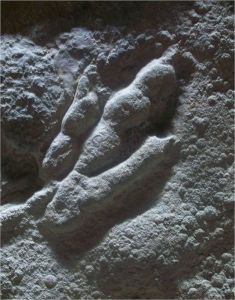 It was an 1835 road paving project in the Greenfield area that got the attention of scientists, after a large volume of tracks were found. Dr. James Dean is credited with recognizing the scientific significance of the tracks. Professor Edward Hitchcock of Amherst College began to study the many tracks, thinking at first they were from some kind of “unknown ancient birds”. Hitchcock’s intensive study of the tracks essentially started the field of Paleoichnology (the study of fossil traces). And so it began.
It was an 1835 road paving project in the Greenfield area that got the attention of scientists, after a large volume of tracks were found. Dr. James Dean is credited with recognizing the scientific significance of the tracks. Professor Edward Hitchcock of Amherst College began to study the many tracks, thinking at first they were from some kind of “unknown ancient birds”. Hitchcock’s intensive study of the tracks essentially started the field of Paleoichnology (the study of fossil traces). And so it began.
You could spend your whole life learning about dinosaurs, of course. There are many places to learn about the history of dinosaurs in the Pioneer Valley and even visit tracks still in the ground outside. One of the most amazing places to visit is the Amherst College Museum of Natural History, since there has been study of these local dinosaurs since thye 1830’s! There is an incredible array of tracks as well as passionate staff who will impress you with their knowledge. This Yankee magazine article has a great list of “Places to see dinosaur tracks in southern New England.” The Nash Dinosaur Track Site and Rock Shop has a some great information as does the
If you have a few minutes or a lifetime, drop into this little rabbit hole of amazing history and see the place you live with new eyes.
Get Outdoors & Remember to Wear Your Orange – Deer hunting season is upon us!

The season is upon us where all outdoor enthusiasts need to take caution!
The deer hunting season in Massachusetts is the most popular and concentrated hunting season of the year. Monday through Saturday, the woods and forests are full of folks hoping to fill their freezers full of meat and engage in an age old pastime that has been happening in the state for many, many years. I have attached a document that reflects the “when” of the hunting seasons, though not the where. Please inform yourself as to where in your area hunting is occurring, and keep yourself safe by wearing orange, sticking to the trails, and using common sense.
Have fun and stay safe!
Hunting season Doc:seasons-summary-2014
Biking In The Quabbin!
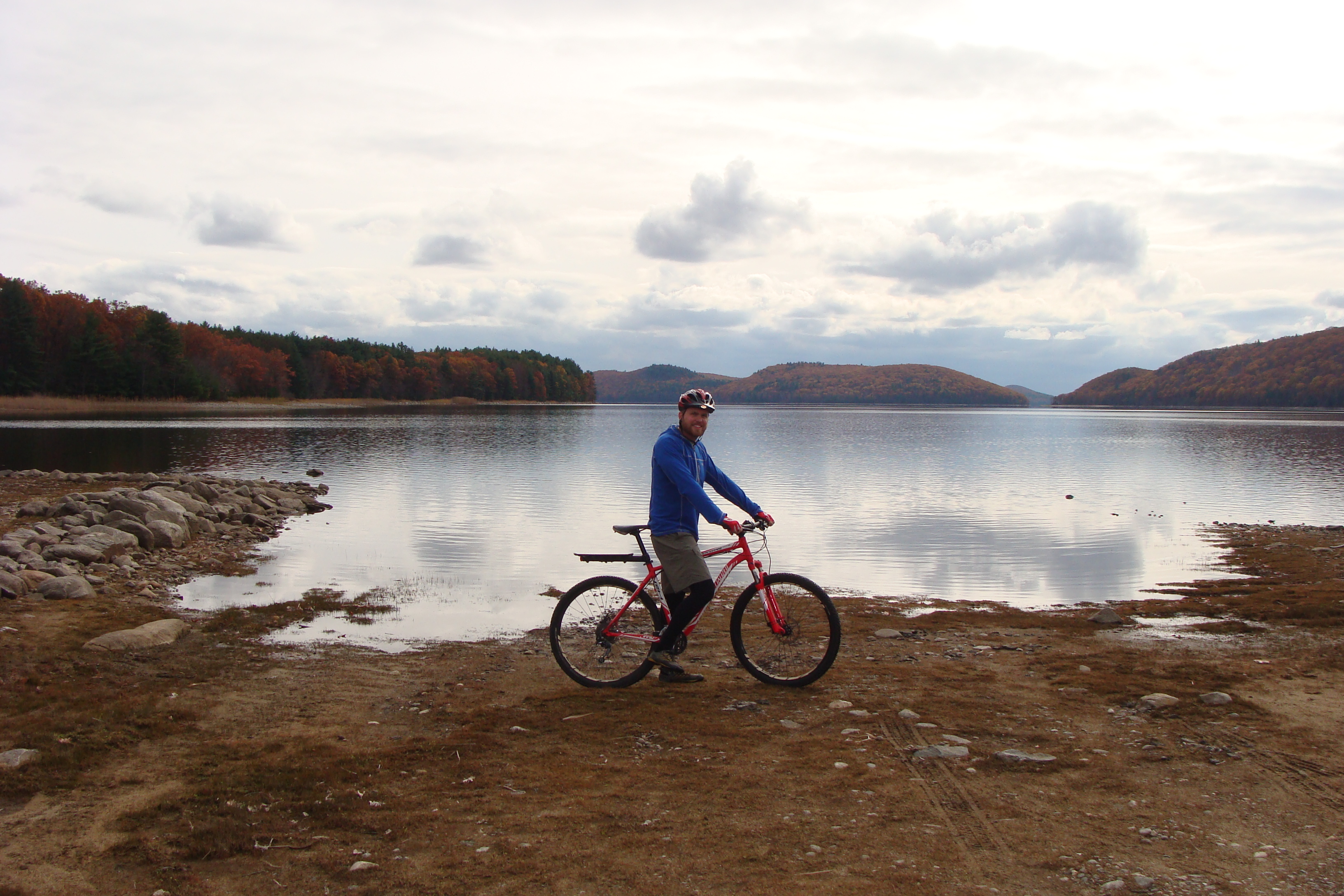
I have spent many a day wandering on and off trail in the Quabbin Reservoir over the last 30 years.
I recently, and happily, found out that certain sections of the Quabbin can be explored by bicycle! It was such a delight over the last few weeks to venture out, with my wife on one occasion, my friends on another, and once on my own.
On my solo venture, I had a wonderful encounter with a moose, 4 otter, and a number of loons!
There are four different spots to explore – see maps here: eastquabbike, northquabbike, quaboffresbike, quabparkbike
Enjoy!!
Was a 9-Foot-Long Shark Eaten Off of Australia?
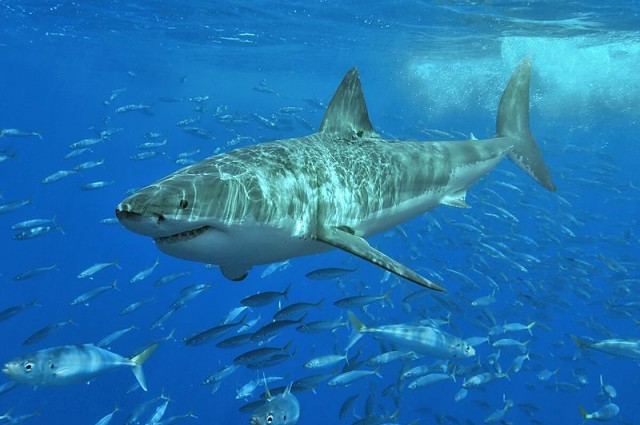
An 11yo incident off the coast of Australia has recently come to light, and it’s a fascinating one.
Four months after ‘shark alpha’ was tagged with a radio tracker, its unit washed up on shore only miles from where it had been tagged. After reviewing the data, researchers believe that the radio tag took an eight-day ride in the belly of a massive great white.
It is possible that in a fight with another shark the device was bitten off, but scientists are entertaining the possibility that the entire shark was consumed by a “colossal cannibal great white shark.”
For more information visit IFLScience.Com and The Smithsonian Chanel.
 Adventure In Adventure Out
Adventure In Adventure Out